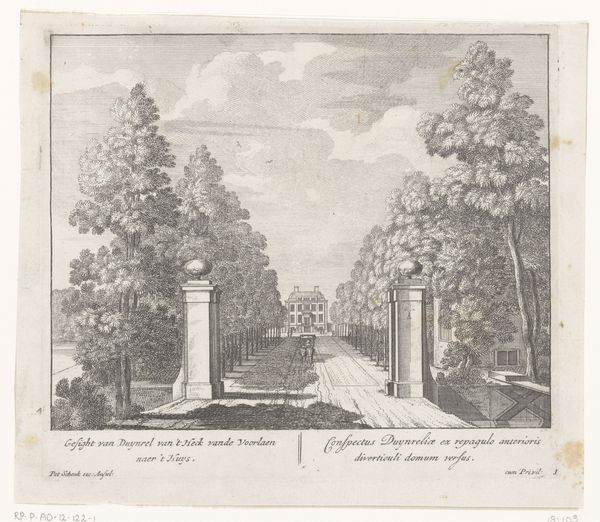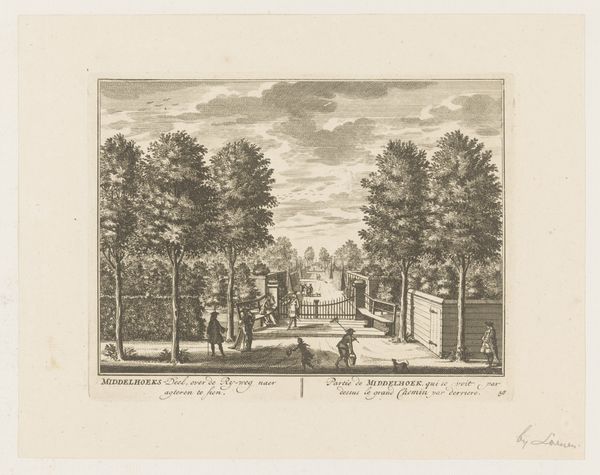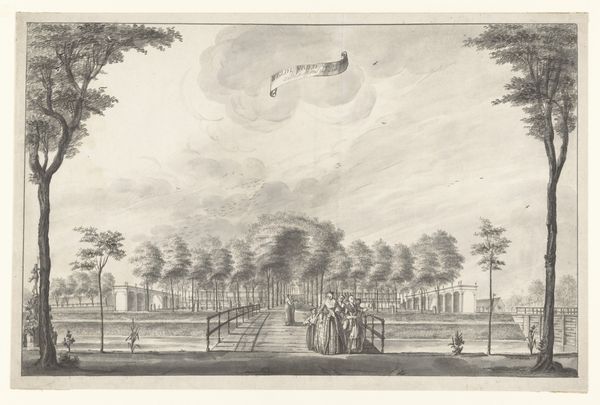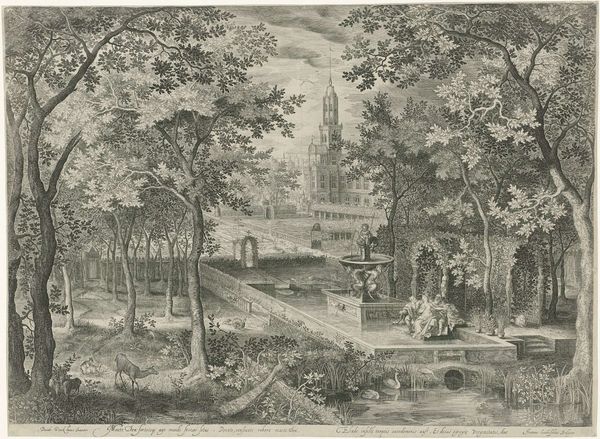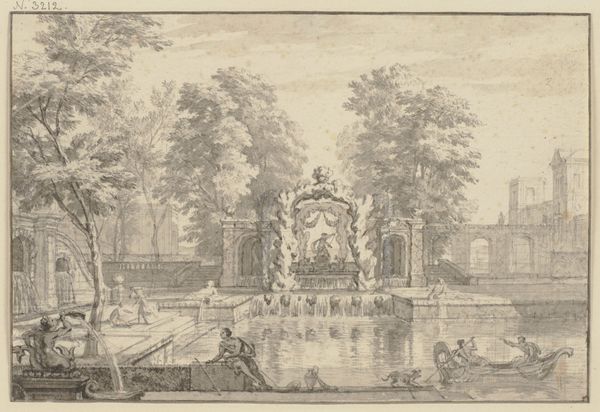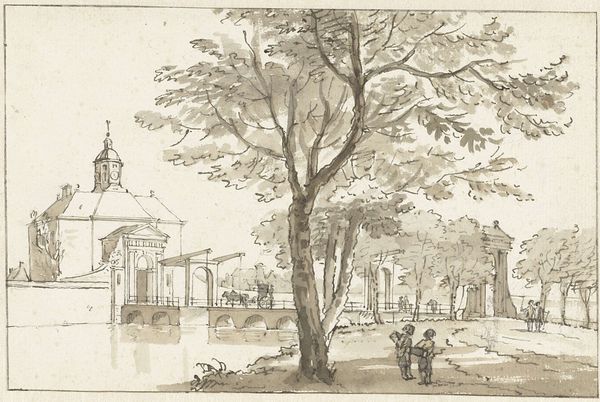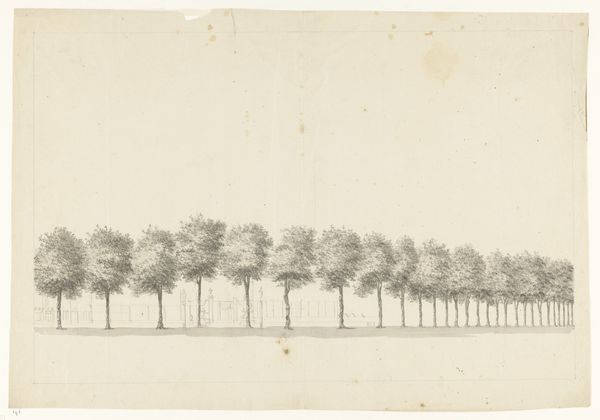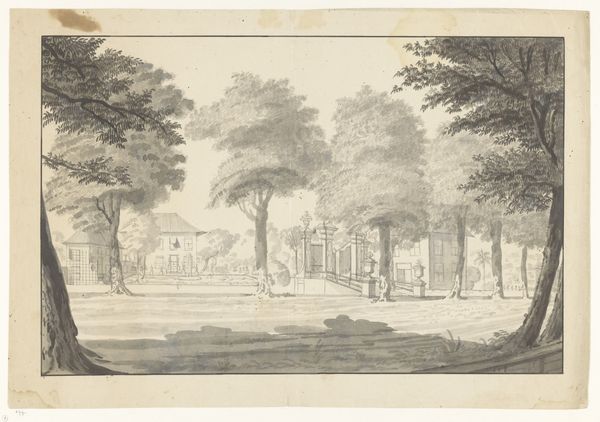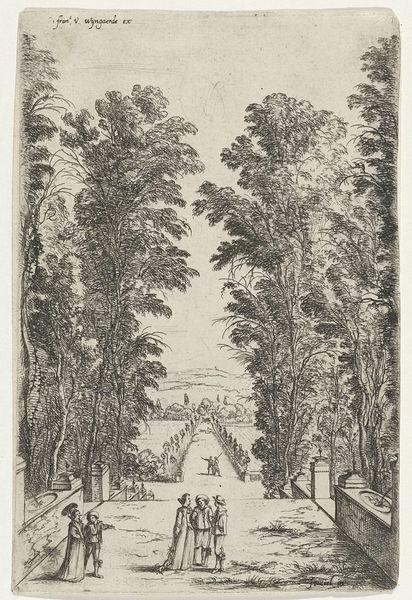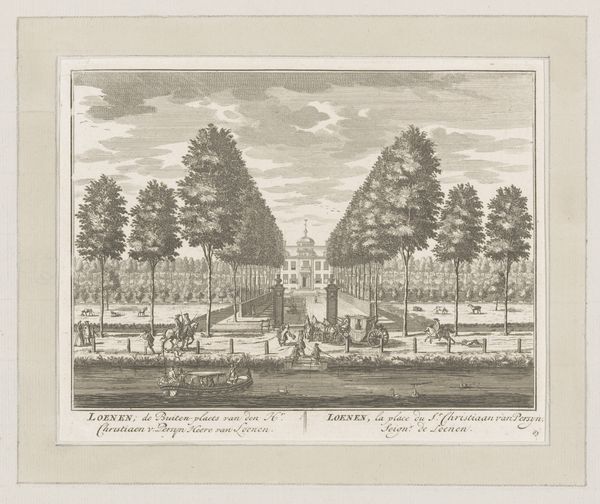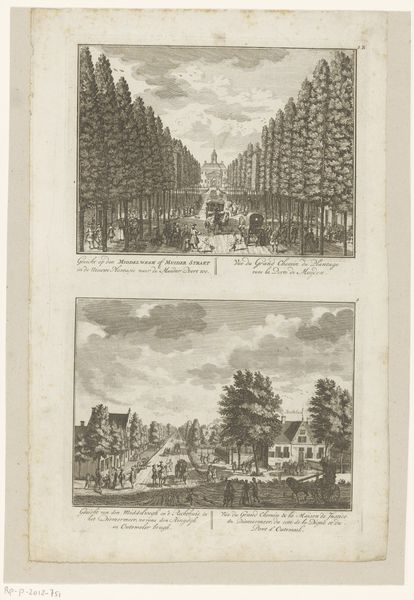
Decorontwerp voorstellende de tuin van het Keizerlijk Paleis 1706 - 1756
0:00
0:00
drawing, etching
#
drawing
#
garden
#
baroque
#
etching
#
landscape
#
etching
#
perspective
#
geometric
Dimensions: height 292 mm, width 459 mm
Copyright: Rijks Museum: Open Domain
Editor: This drawing, titled "Decorontwerp voorstellende de tuin van het Keizerlijk Paleis," or "Design depicting the garden of the Imperial Palace" was created by Giuseppe Galli Bibiena sometime between 1706 and 1756. It’s an etching, giving it such precise lines and intricate details. I’m struck by how the garden is organized with geometric features and lines and perspective in mind. What's most fascinating to you about it? Curator: For me, it’s how this seemingly simple etching speaks volumes about the process of creating theatrical spectacle. We're not just looking at a garden; we're witnessing the blueprint for manufactured pleasure. Etchings like this weren’t merely artistic exercises. Consider them tools of production. Bibiena controlled a workshop; this etching allows us a glimpse into that world. How do the materials of stagecraft and social aspiration intersect here, would you say? Editor: It is interesting to think of stagecraft and material needs converging to make what is viewed as beautiful and artistic. Now I'm seeing the trees are also very geometrically arranged in lines like they are on a stage. It appears that art and consumption blur into each other. Was this type of staging only for the elite? Curator: Precisely. Think about the labour involved, not just in the etching itself, but in realizing such a design on stage. Skilled artisans, carpenters, painters – their collective labor shaped the spectacle, catered specifically to the tastes of a consuming aristocratic audience. Consider how the illusion of depth is manufactured through etching - it mirrors the manufactured realities for those wealthy enough to view the actual staged scene. Do you see echoes of power structures reflected in this careful orchestration? Editor: Definitely! This design isn't just a pretty picture, it’s a document of how power was displayed and reinforced. I am taking a different look at art today. Curator: Yes, the consumption of it. This etching makes one wonder where these materials for production came from. I'm so glad we discussed the labor that goes into stage designs and performances of the era.
Comments
No comments
Be the first to comment and join the conversation on the ultimate creative platform.
